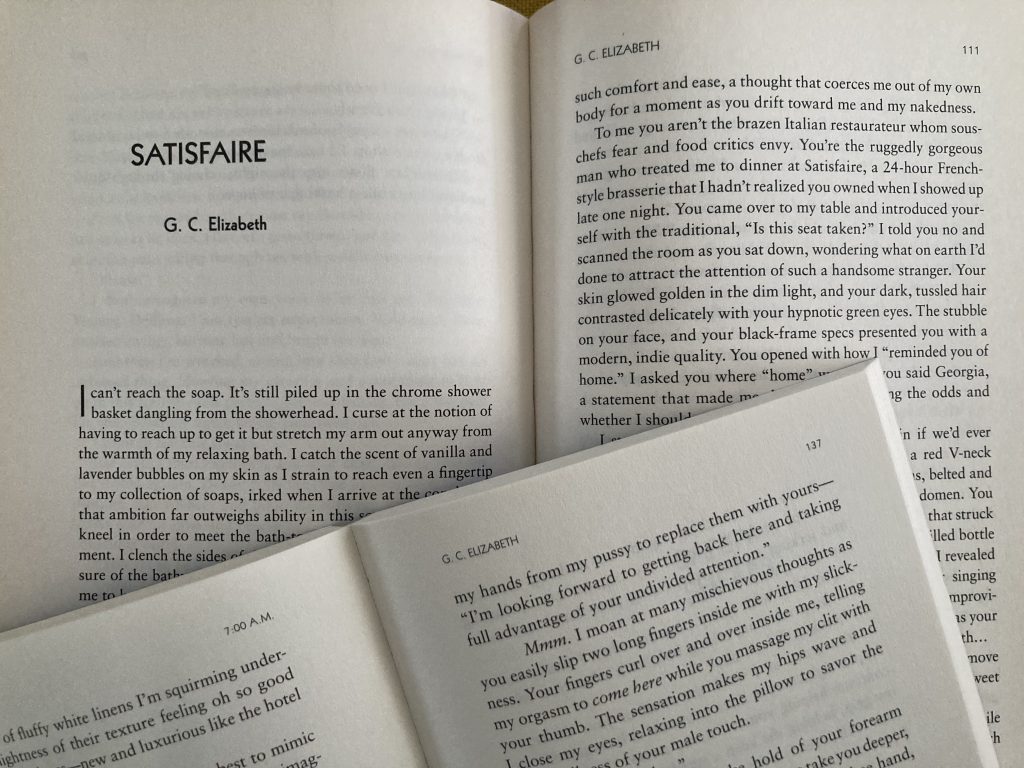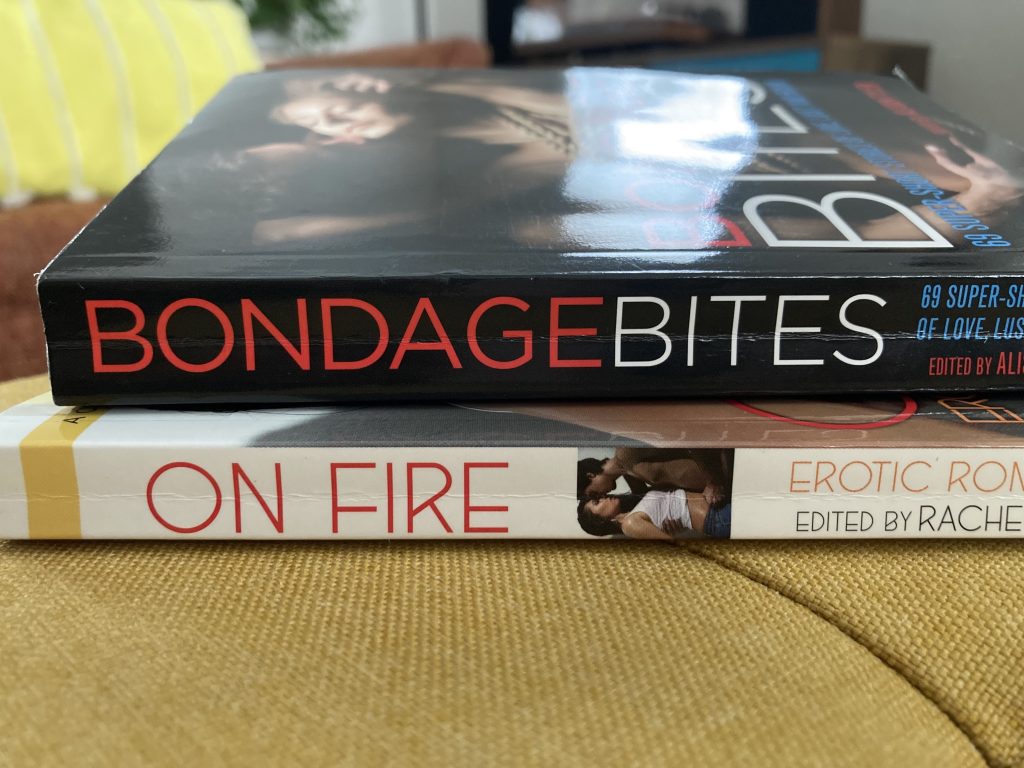The Writer’s Corner features poetry, essays, short stories, satire and various fiction and non-fiction from SCAD Atlanta students. To submit your own work for the Writer’s Corner, email features@scadconnector.com.

Une Visite du Musée by Jackson Williams
The Metropolitan Museum of Art was the largest in the United States, with over two million works across its two million square feet of property. The gigantic complex divided 5th Avenue and Central Park in Manhattan’s Upper East Side. Its limestone steps ascended to glass doors that looked minuscule under the towering Roman archways, and each one had Corinthian columns on either side to support a flat rooftop. Unmissable and ornate, the museum’s architecture was a testament to its purpose of displaying artistic achievement.
Noelle Moreaux crossed through the entrance with one hand gripping a leather satchel. It bumped against her hip as she avoided pedestrians that never seemed to have a walking speed above “tortoise.” No running in the building, but couldn’t they at least make a path for people with places to be? Tourists didn’t move at a New Yorker’s pace. Noelle was raised in the city and had the leg stamina to prove it. Rain or snow, she’d walk anywhere she had to be—if it wasn’t worth walking, it wasn’t worth visiting, she thought.
It had been fifteen years since her first visit to the museum on an elementary school field trip. Noelle no longer needed a tag-along rope to stay on track because volunteering as a tour guide allowed her to access the art world for free. The eight-hundreds section was committed to memory by now, and she prepared for an afternoon tour by adjusting her outfit. Noelle smoothed her pleated skirt and untangled a lanyard from her long hair, freshly done in butterfly locs. Her houndstooth-patterned sweater vest layered over a blouse she received last Christmas. A gold charm bracelet matched her dangling earrings, and every part of the outfit coordinated with the color palette of her section: brown, white, and yellow ochre. What kind of art history student wouldn’t pay attention to aesthetics?
Noelle’s heels clicked louder as she distanced from the museum’s entryway and found the eight-hundreds wing, where her favorite Symbolist artworks lived. Everyone but the statues faced the wall, admiring Rousseau’s brown landscapes or Millet’s blurry wood-panel paintings, and they were better in person than online. Photographs always obscured the vibrancy or scale. They couldn’t recreate the tension between a human and a beautiful thing—the kind of gravity that made people be quiet and sit still. It took something of great magnitude to stop time.
“Noelle, right?”
A man with sandy blonde hair and glasses drew her attention. His name was Theo, but he was in Noelle’s contacts as “Glasses Guy.” They shared an art history class, and their professor recommended that Noelle help a struggling classmate find his passion (pass the course). Her job was to give tours, not perform miracles. Nonetheless, she turned on her customer service personality.
“That’s me,” she said. “Ready to see some paintings?”
“Y’all have those?” he asks.
Noelle had heard a lot of lame jokes, but how Theo said it made her laugh. It didn’t match his flat, raspy voice that sounded surprisingly deep for his thin frame. He didn’t talk enough in class for her to notice before.
“Nah, we ran out. You were supposed to restock,” she said.
“Shit, let me go call Rembrandt real quick,” he said.
“No, my boy, this—” Noelle paused. She wanted to delve into how Rembrandt was a Dutch Baroque painter, not 1800s French, but that probably would’ve gone over his head. “this is more modern.”
The pair stood in awkward silence as they waited for anyone else to arrive. Noelle applied a new coat of lipgloss in her phone’s reflection, and Theo looked around as if he were an out-of-place artifact. People in the distance seemed comically small under the towering ceilings of the Met. There wasn’t a heavy amount of foot traffic in this wing on a snowy Tuesday afternoon, not that Manhattan’s poor weather usually stopped anyone.
“We can do a private tour,” Noelle said and motioned for the lone tourist to follow. “There are a lot of ‘Theos’ around here. For instance, Théodore Gericault painted my beloved Evening: Landscape with an Aqueduct.”
An eight-foot-tall canvas dominated the wall, depicting a moody landscape at sunset. The brown rock formations in the front rescinded to dark blue clouds and mountains in the background. The pastel-yellow sky illuminated through transparent leaves that wrapped around a stone tower. Gericault’s brushstrokes were subtle and moved with the grooves of his terrain, giving the illusion that this was a portal more than a two-dimensional surface.
“Wow,” Theo said, taking in the pure massiveness of the oil painting.
“This is only one of three,” Noelle said with a smile. “It’s meant to transport us to an ancient Roman countryside because French romanticists loved old-school neoclassicism. We can attribute this standard back to Nicolas Poussin, who thought art should depict Biblical or mythological motifs. So basically, they liked Greek and Roman stuff.”
Theo watched Noelle lecture on the masterpiece with alert eyes and relaxed shoulders. He nodded as she explained the historical context behind each part of the piece. Her hands matched the energy of her voice, waving around to hammer the information. There was no telling if Theo understood any of it, but he was polite enough to listen with a small smile. Time fell like snow as they moved through the gallery halls.
“I like how you pronounce all the French,” he said. “Like the original version of my name, Théodore. I’d sound a lot fancier if I put that on my resumé.”
His French accent was terrible, but Noelle appreciated the compliment. She swept some hair over her shoulder with a laugh. Theo’s cheeks flushed red.
“I’d stick with Theo if you’re gonna pronounce it that badly.”
“Maybe you can teach me French instead.”
“Let’s be realistic, love.”
Noelle kept reminding herself to be professional but slipped into a casual attitude with Theo. His calm manner and witty remarks charmed her enough to feel comfortable talking to him like a friend. The Met and university demanded professionalism, but Theo coaxed familiarity. His blue-framed glasses and brown eyes reflected the hues of Noelle’s favorite pieces. She didn’t think much of him before, but maybe there was something to her classmate.
“Ooh, here’s Retreat from the Storm by Jean-François Millet,” she said.
The painting showed a woman struggling against a windstorm with sticks in one hand and a child in another. Even the brushstroke technique blurred the figures in the wind’s direction.
“That’s me trying to pass this class,” Theo said. He was joking, but there was a twinge of disappointment in his voice.
“No, this one’s you,” Noelle said. She took his hand and led him to A River in a Meadow. “It’s a Théodore Rousseau.”
“Wow, that’s corny.”
“You’re corny.”
“Insulting your tour? That’s hateful.”
“You’re hateful.”
Noelle and Theo laughed as they continued through the plain, square room. Art museums were a bunch of little squares arranged in perfect symmetry. Noelle appreciated order, but hints of chaos brought a space to life. She tried to slip her hand away, realizing what she’d done, but Theo hesitated before letting it go. His hand felt warm against Noelle’s smooth skin.
“Anyways, here’s room 803, where we keep the portraits,” she said. “Anything you want to see?”
“That one.”
He pointed to a modest portrait of A Woman Reading by Camille Corot. The subject read a book in an undisturbed meadow while a man in the background sailed away.
“I’m working on something with a color palette like this one,” Theo said, then pulled a tiny sketchbook from his pocket. “Mind if we stay here for a bit?”
“Oh, sure. Nobody else is going to bother us,” Noelle said.
She discussed Camille Corot’s en plein air technique and how some of the best art is completed on-site. Theo scribbled graphite across the sketchbook while his tour guide shared her passion for 19th-century French art. Halfway through her spiel, Noelle felt that he wasn’t studying the painting as much as he was admiring her. His eyes flitted from the pages to the muse.
“What’s your favorite outside place?” Theo said. He pulled a small watercolor tin from his other pocket. “Take me there. Visually, I mean.”
“Imagine a super colorful beach with clear water, and clean white sand.”
“Hudson River, got it,” Theo interjected, earning an eye-roll from Noelle.
“Shut up,” she said. “Anyways, the beach had really soft sand. All the buildings in our area had these square red roofs—I went there with my parents. My dad’s from Saint Barthélemy, which is this tiny Caribbean island. So, he’s why I had to learn French. He’d have a stroke if he heard thee-oh.”
Noelle closed her eyes to picture the sunny island coastline where her architect father rambled in his thick accent about the old churches, but he made it fun by letting her play in them. She remembered her mother’s dark, slender fingers combing the tangles out of her nine-year-old scalp after a saltwater swim. It was messy again by the time the Moreauxs went to church the next morning. Grandmother’s steamed vegetables and spicy fish still trumped any American seafood restaurants. Saint Barthélemy was a family vacation that lived in gaudy picture frames in the Moreaux home, and thinking of it made Noelle nostalgic for the beach.
“But why do you want to know?” she asked.
“You’ll see if you come to my gallery,” Theo said, looking into her eyes with an expression of adoration. He lifted a folded piece from his sketchbook. It was a ticket. “Nothing too fancy, but a bunch of us fine arts majors put it together. I’ll make it worth your time. Promise.”
Noelle took the watercolor-stained ticket from his hand as he knelt like some kind of prince. He had a yellow smudge on his face. She thought it was cute.
“I’d love if you gave me a tour.”
Two weeks later, after some tiresome shifts and art history exams, Noelle entered Theo’s gallery. They’d been texting since their meeting at the Met, and Noelle had felt herself taking extra time to get ready before class. Her notification volume was turned up on her phone, and she had started to sing in the shower to songs off Theo’s music playlist called “Glasses Guy Hours,” which he titled after Noelle admitted to not initially using his name in her contacts. He had taste!
When she arrived at the party, other students from her school brisked around with excitement over their paintings and illustrations. Noelle wore a maroon slip dress and cardigan to keep out the December chill, but the school’s busted heating system wasn’t helping. She examined the pieces one by one, giving them the same care that she would the historic wonders at the Met, but there was an important artist missing: Theo. Maybe he didn’t show? Maybe he procrastinated on his painting? She tried not to be disappointed.
One shiny, still-wet portrait caught her attention, and it was at the back of the classroom. It showed a Black woman reading on the beach as two silhouettes, an older man and his wife, sailed toward her in the background. The central figure had blue sleeves and a beige skirt, posed in the same sitting position as Corot’s A Woman Reading. The composition had a calming sfumato of neutral hues brushed on with textured, fluffy strokes that resembled 19th-century styles. What was most impressive about this portrait was its striking resemblance to Noelle. It had the curve of her glossed lips, bend of her nose, arch of her brows, signature eyeshadow, and the intricate texture of her locs that were pushed back by a gold headband. In a wispy signature, it was signed by Theo Raschel.
Tears formed in Noelle’s eyes as she beheld the amazing work.
“Oh my god… oh my god. Is that me?”
“Ah, you found it. Of course, I was in the bathroom,” Theo said as he approached Noelle, who pulled him into a tight hug to bury her emotional face in his shoulder. He wrapped his arms around her, gently rubbing her back.“Oh, hey. It’s okay. I’ve got you.”
“It’s beautiful,” she said through a voice muffled by his shirt. Theo couldn’t help but to hug her closer.
“Well, you’re beautiful,” he said as if the statement were obvious.
“What the fuck, how? How did you do it?”
“Some tour guide dragged me around the Met for a few hours. Figured I’d whip up a little something for them.”
“You’re crazy. You’re actually crazy, man,” Noelle said. When she lifted her face, a print of makeup smudged his dress shirt.
“I look crazy now that you’ve painted me back.”
She felt Theo’s deep laugh rumbled through his chest, and it was a sound wonderful enough to drown out everyone else. They stared at each other for a moment, taking in the most amazing view of someone who appreciated the details of someone they adore.















 Tim Kaminski
Tim Kaminski 


















